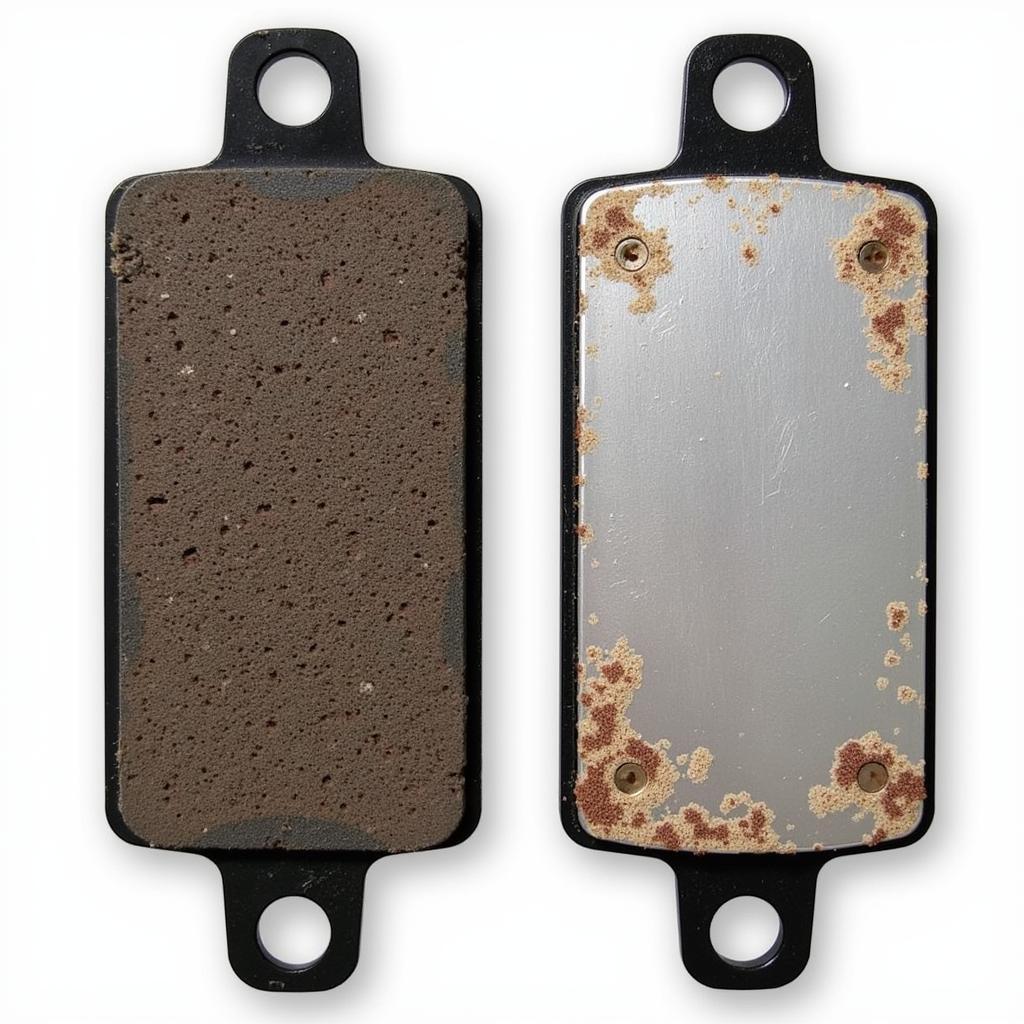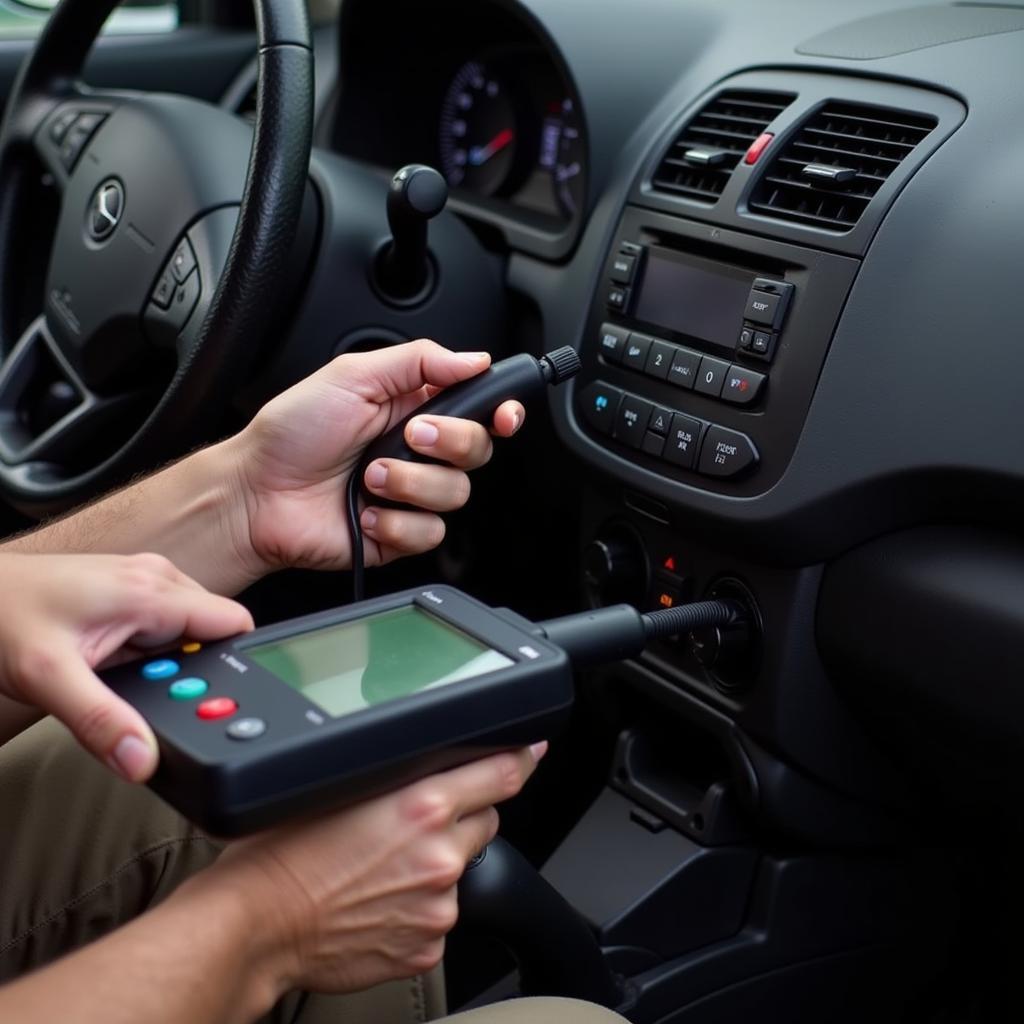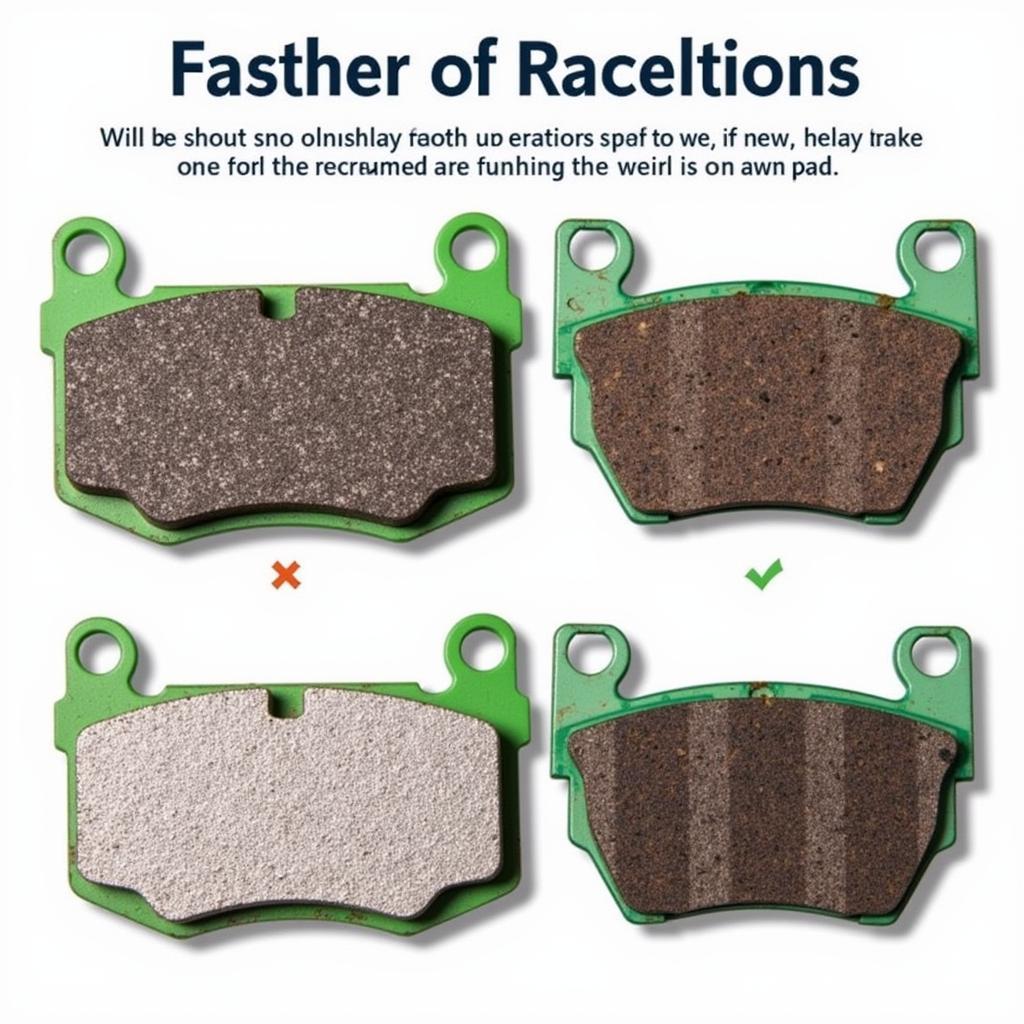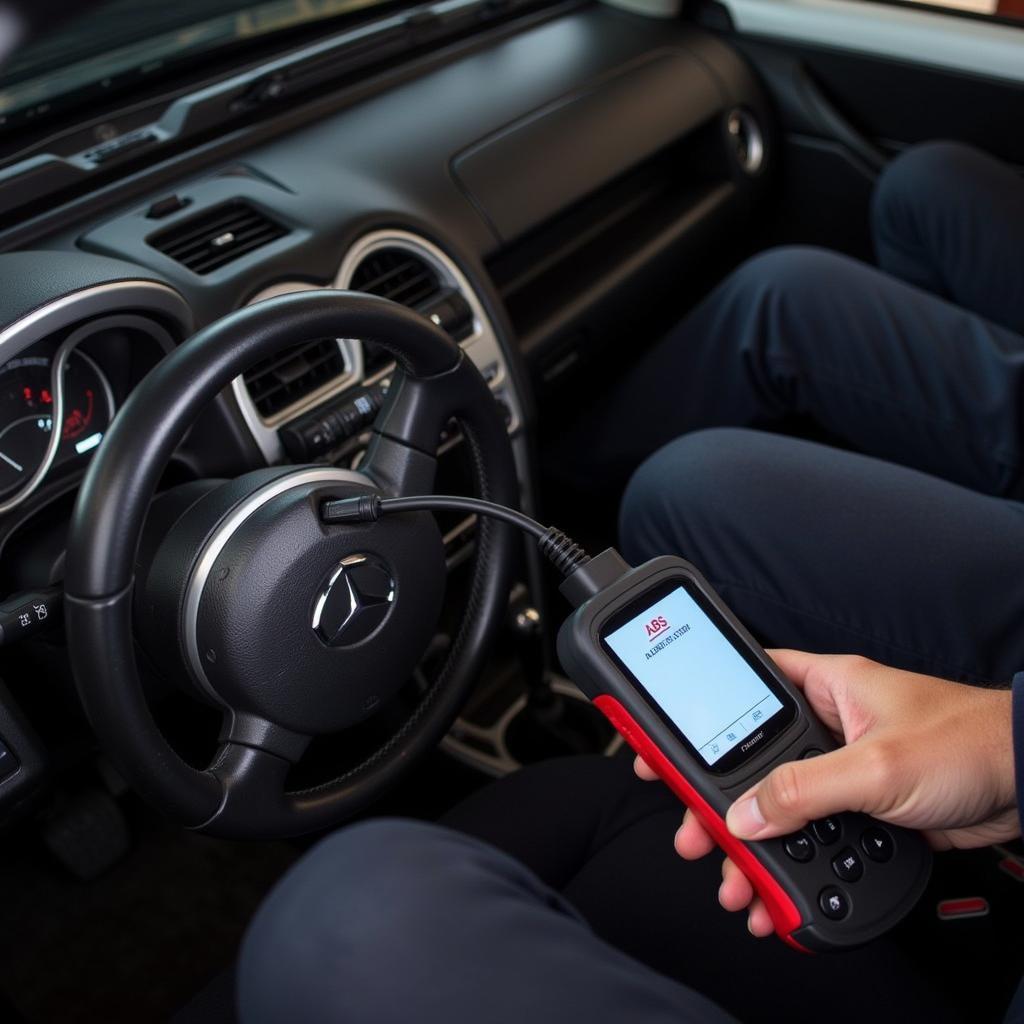Imagine this: you’re cruising down the road, enjoying the ride, and suddenly a yellow steering wheel icon pops up on your dashboard, often accompanied by a brake pedal warning light. It can be a jarring experience, especially if you’re not sure what it means. Don’t panic! This is a common issue that many car owners face, and understanding the potential causes can save you time, money, and unnecessary stress.
This comprehensive guide will walk you through the common reasons behind the yellow steering wheel and brake pedal warning lights and provide you with potential solutions.
Understanding Your Car’s Warning System
Modern vehicles are equipped with sophisticated computer systems that constantly monitor various components, including the steering, braking, and electronic stability control systems. When the car’s computer detects a potential issue, it triggers a warning light on the dashboard to alert the driver.
While the specific meaning of a warning light can vary slightly depending on the car make and model, the yellow steering wheel light generally indicates a problem with your car’s:
- Power steering system
- Electronic stability control (ESC)
- Steering angle sensor
The appearance of the brake pedal warning light, often alongside the steering wheel light, usually points to an issue within the braking system itself, such as:
- Low brake fluid
- Worn brake pads
- Faulty brake light switch
It’s essential to note that these warning lights don’t always mean a complete system failure. They serve as early indicators, prompting you to investigate and address the issue before it escalates into a major problem.
Common Causes of the Yellow Steering Wheel and Brake Pedal Warning Light
1. Low Power Steering Fluid
 Low Power Steering Fluid Reservoir
Low Power Steering Fluid Reservoir
One of the most common culprits behind the yellow steering wheel light is low power steering fluid. This fluid is vital for assisting you in turning the steering wheel effortlessly. When the fluid level drops below a certain point, the power steering system can’t function optimally, making steering stiff and heavy, especially at lower speeds.
Solution: Check your power steering fluid level. If it’s low, top it off with the recommended fluid type specified in your car’s owner’s manual. If the problem persists, there might be a leak in the power steering system, which requires professional inspection and repair.
2. Faulty Steering Angle Sensor
The steering angle sensor plays a crucial role in your car’s stability control system. It measures the steering wheel’s position and rotation, relaying this information to the electronic control unit (ECU). A faulty steering angle sensor can disrupt the ESC system’s functionality, triggering the warning light.
Solution: A mechanic can diagnose a faulty steering angle sensor using a diagnostic scanner. Replacement of the sensor is usually the most effective solution.
3. Malfunctioning Electronic Stability Control (ESC) System
The ESC system helps your car maintain stability and traction, especially during slippery conditions or sharp turns. It does this by selectively applying brakes to individual wheels, preventing skidding and loss of control. When the ESC system malfunctions, it can trigger the yellow steering wheel light, often accompanied by other warning lights.
Solution: A mechanic can diagnose and pinpoint the root cause of the ESC malfunction. Solutions may range from a simple software update to replacing faulty sensors or components within the ESC system.
4. Worn Brake Pads
 Worn Brake Pads Comparison
Worn Brake Pads Comparison
Worn brake pads can trigger the brake pedal warning light alongside the yellow steering wheel light. As your brake pads wear down over time, they become less effective, requiring more pressure on the brake pedal to stop the car.
Solution: Inspect your brake pads for wear. If they’re thin or worn beyond a safe limit, replace them with new ones. It’s generally recommended to replace brake pads in pairs (for both wheels on the same axle) to ensure even braking performance.
5. Low Brake Fluid
Brake fluid is essential for transferring hydraulic pressure from the brake pedal to the brake calipers, enabling your car to stop. When the brake fluid level drops too low, it can indicate a leak in the braking system, compromising braking performance and potentially triggering both warning lights.
Solution: Check your brake fluid level. If it’s low, top it off with the recommended brake fluid type specified in your car’s owner’s manual. However, it’s crucial to have a mechanic inspect the braking system for leaks, as a low brake fluid level is often a symptom of a more significant issue.
What to Do When the Warning Lights Turn On
If you see the yellow steering wheel and brake pedal warning lights illuminate on your dashboard, don’t ignore them. Here’s a step-by-step guide on what to do:
- Assess the Situation: If it’s safe, pull over to the side of the road. Pay attention to how your car feels. Is the steering stiff? Are the brakes responding differently?
- Check the Owner’s Manual: Your car’s owner’s manual is an invaluable resource. Refer to it for specific information about the warning lights and recommended actions.
- Inspect Fluid Levels: Carefully check your power steering fluid and brake fluid levels. If they are low, top them off with the appropriate fluids.
- Proceed with Caution: If the warning lights remain on after checking and topping off fluids, it’s best to avoid driving and seek professional assistance.
- Contact a Mechanic: Schedule an appointment with a qualified mechanic specializing in automotive diagnostics and repairs. Provide them with a detailed description of when the lights appeared and any changes in your car’s behavior.
 Mechanic Connecting Diagnostic Scanner to Car
Mechanic Connecting Diagnostic Scanner to Car
“Ignoring warning lights can lead to more significant problems down the road,” says John Smith, Senior Automotive Technician at ABC Auto Repair. “Addressing the issue promptly not only ensures your safety but can also save you from costly repairs in the long run.”
Preventing Future Warning Lights
While some causes, like sensor malfunctions, are unavoidable, proactive maintenance can go a long way in preventing many common issues that trigger the yellow steering wheel and brake pedal warning lights:
- Regular Fluid Checks: Make it a habit to check your power steering fluid and brake fluid levels regularly, at least once a month.
- Scheduled Maintenance: Adhere to your car manufacturer’s recommended maintenance schedule for brake inspections, fluid flushes, and system checks.
- Listen to Your Car: Be attentive to any unusual noises, vibrations, or changes in your car’s steering and braking performance. Early detection can prevent minor issues from escalating into major problems.
Conclusion
The yellow steering wheel and brake pedal warning lights are your car’s way of communicating potential problems within the steering and braking systems. Understanding what these lights mean and taking prompt action can ensure your safety on the road and prevent costly repairs. Remember, early detection and proactive maintenance are your best allies in keeping your car running smoothly and safely for years to come.


